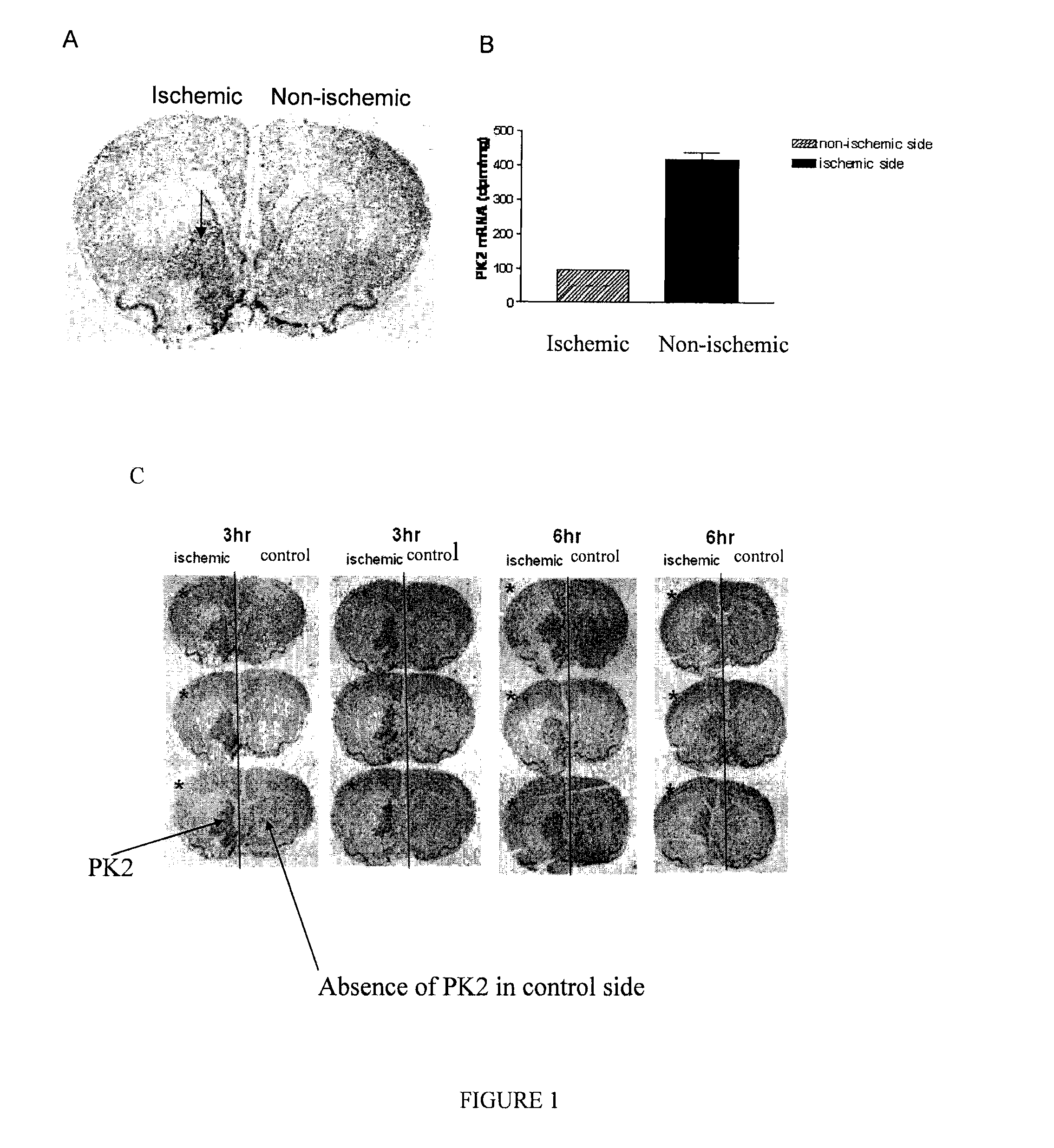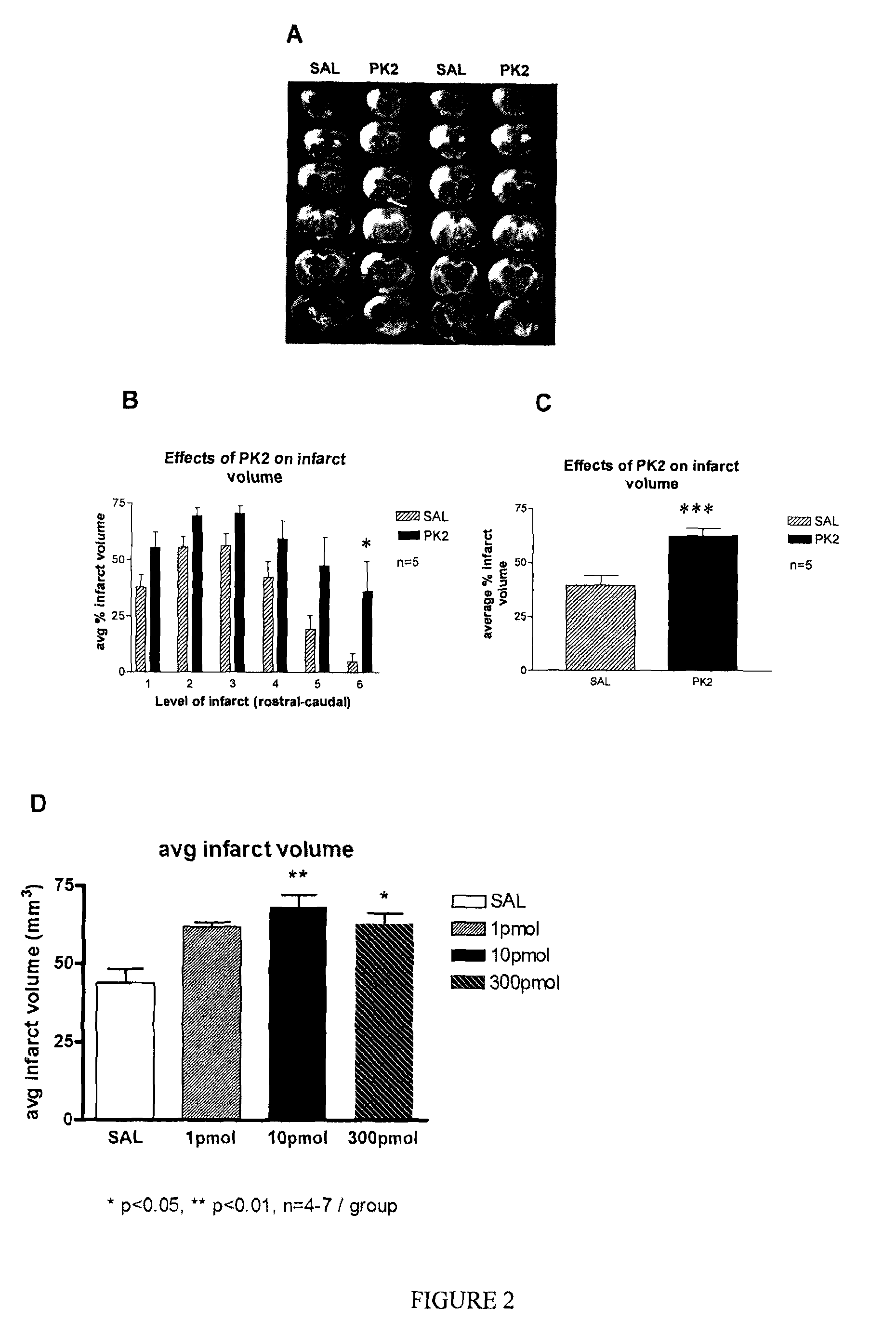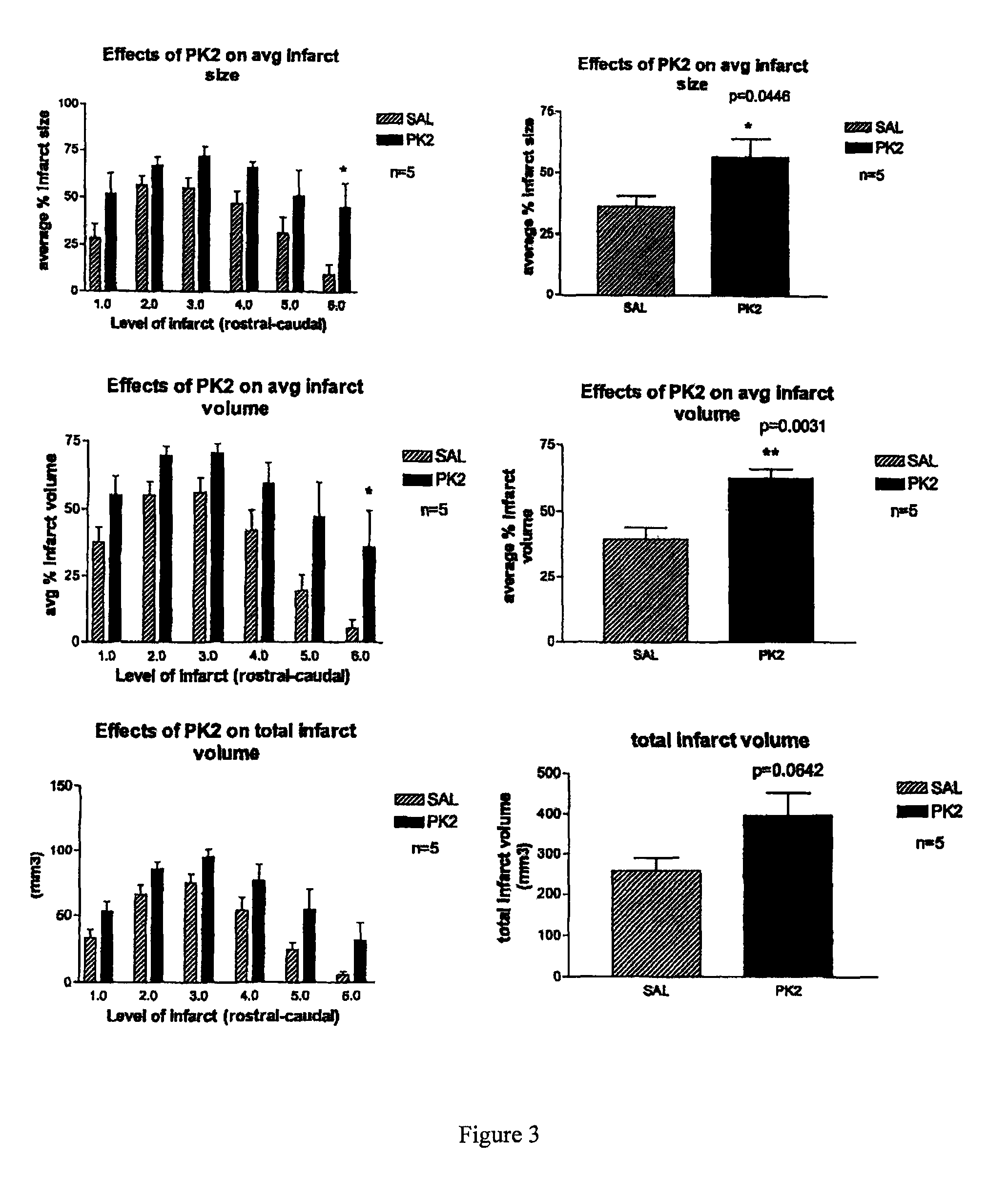Methods for treating cerebrovascular disease comprising administering an agent that inhibits prokineticin receptor activity
a technology of prokineticin and receptor activity, applied in the field of identifying agents effective, can solve the problems of cell injury that can progress to cell death, unclear how neural ensembles are synchronized, and propagation of abnormal discharge of neurons, so as to prevent or treat cerebrovascular disease or disorder, inhibit receptor activity, and prevent or treat seizures.
- Summary
- Abstract
- Description
- Claims
- Application Information
AI Technical Summary
Benefits of technology
Problems solved by technology
Method used
Image
Examples
example i
Methods for the Infusion, Stroke Model, Staining and Quantitation
[0116]Distal Middle Cerebral Artery Occlusion (dMCAO) was performed in the PK2 intracerebroventricular (ICY) infusion study. Anesthesia induced by 5% isoflurane and maintained by 2-3% isoflurane. A ventral midline incision was made, and the two CCAs were isolated. Snares were placed around the CCAs, and the animal was placed on its right side. A 2-cm vertical scalp incision was made midway between the left eye and ear. The temporalis muscle was bisected and a 2-mm burr hole was made at the junction of the zygomatic arch and squamous bone to expose the distal MCA. The dura was cut and the distal MCA was permanently electro-cauterized. The CCA were then occluded with clips for 1 hour, and the animals were sacrificed and perfused after 24 hr.
[0117]PK2 (0.3 nmol) was stereotaxically infused prior or post-ischemia. Animals were anesthetized starting with 5% isoflurane, then maintained on 2-3% isoflurane. Body temperature, E...
example ii
Methods for PK2 Induction and the Stroke Model Used
[0119]Intraluminal Middle Cerebral Artery Occlusion (MCAO) was performed as follows. Male Sprague Dawley rats (280-320 g) were used. Animals were anesthetized starting with 5% isoflurane, then maintained on 2-3% isoflurane. Body temperature, ECG, and respiration rate were monitored every 15 minutes and kept in physiological ranges. MCAO was be performed using an intraluminal suture (1 hr occlusion), and rats were sacrificed 24 hr after reperfusion. For MCAO, the common carotid, external carotid, and pterygopalatine arteries were exposed and ligated on the left side. The left internal carotid artery was transiently occluded with a microsurgical clip, and an arteriotomy was made in the common carotid artery. A 3.0-monofilament suture with a rounded tip will be inserted into the common carotid artery and advanced through the internal carotid artery to the ostium of the middle cerebral artery (MCA) to occlude the MCA. Rats were sacrific...
example iii
PK2 MRNA Expression is Increased in Cerebral Ischemia
[0121]The PK2 gene has multiple hypoxia responsive elements in its promoter.
[0122]Previous study showed that PK2 expression is inducible by hypoxia in vitro. To investigate the role of PK2 in cerebral ischemia, whether PK2 expression is inducible in experimental stroke models was first examined. A middle cerebral artery occlusion (MCAO) using an intraluminal suture that produces infarct in the striatum and / or cortex was performed. FIG. 1A is a representative autoradiographic image of PK2 mRNA induction in the brain after experimental stroke. FIG. 1B is quantitation of PK2 mRNA expression 3 hours after MCAO in ischemic and non-ischemic side. Three hours after reperfusion, rats were sacrificed and processed for in situ hybridization to examine PK2 mRNA expression. n=3, ***p<0.001. PK2 mRNA expression is induced in the striatum on the ischemic side.
[0123]FIG. 1C shows time course of PK2 mRNA induction in the brain 3 and 6 hr after ex...
PUM
| Property | Measurement | Unit |
|---|---|---|
| time course | aaaaa | aaaaa |
| time course | aaaaa | aaaaa |
| molecular weight | aaaaa | aaaaa |
Abstract
Description
Claims
Application Information
 Login to View More
Login to View More - R&D
- Intellectual Property
- Life Sciences
- Materials
- Tech Scout
- Unparalleled Data Quality
- Higher Quality Content
- 60% Fewer Hallucinations
Browse by: Latest US Patents, China's latest patents, Technical Efficacy Thesaurus, Application Domain, Technology Topic, Popular Technical Reports.
© 2025 PatSnap. All rights reserved.Legal|Privacy policy|Modern Slavery Act Transparency Statement|Sitemap|About US| Contact US: help@patsnap.com



